It’s easy to get lost in the detail of the new Morgan Super 3. This is the replacement for the 3 Wheeler that arrived a decade ago and whose success seemingly took its maker by surprise. Morgan expected it to be a niche vehicle even by its own standards. Instead, more than 2500 left the Malvern factory.
Owners use them in two distinct ways, Morgan finds. The traditional owner jaunts around the country on a sunny Sunday afternoon. Then there are those who use them like adventure motorbikes: loading them up with kit, cladding themselves in waterproofs and heading towards the horizon with repurposed motorbike bags and luggage, whatever the conditions.
The Super 3 is meant to more easily accommodate those people as well as retaining the appeal for the traditionalist – and I think it does both spectacularly.
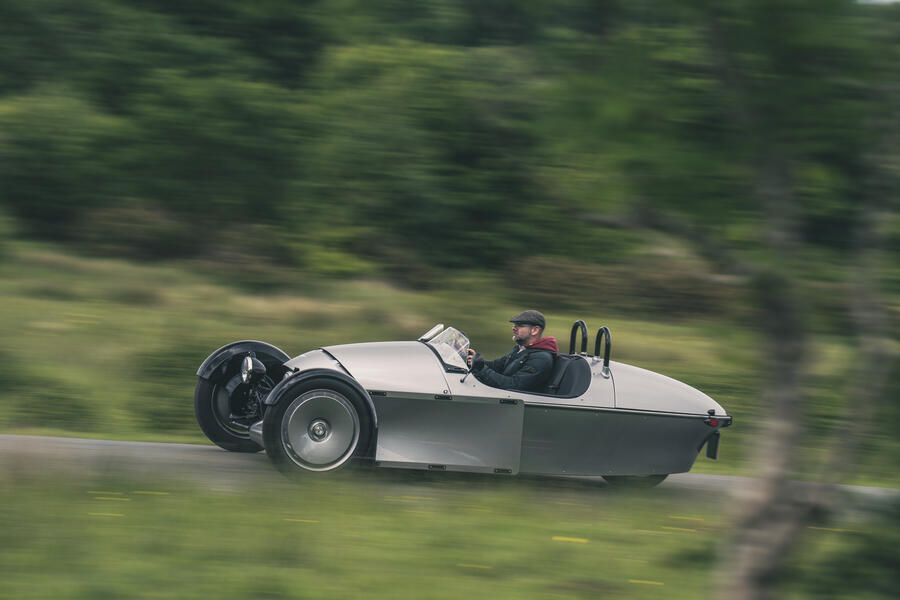
There was a time when Morgan – sometimes proudly the most traditional of car makers – was reluctant to try anything it hadn’t done before. That time certainly isn’t now, although I believe it’s also true that a three-wheeler is an edgier, more flamboyant product that allows the company to exercise more creative flair.
The new trike has flair to spare. It’s also clever. It’s a true monocoque, as many components as possible have been given more than one job, there’s no ash frame beneath the stressed aluminium body panels and it even features Morgan’s first patented item in its 112-year history (a clever mounting clip, by the way).
To my engineer’s eyes, it’s a gorgeous piece of product design, born not from wondering how to make a traditional three-wheeler but how to make a great adventure trike. On a throwback machine, you wouldn’t, for example, find big aluminium castings at each front corner, as here. These big sculpted pieces are at once the engine mounts, the mounting points for the pull-rod suspension, supports for the headlights and the nose cowling and, finished in either silver or black, also classy body surfaces. They’re delicate yet solid like they’ve come from a locomotive, cold to the touch, visually appealing and, lastly, aerodynamically sculpted to direct air into the radiators.
There’s more. The blocky side panels adjacent divert air to the radiators and act as mounting points for the vast array of luggage you can now specify (because Morgan knows accessories can be profitable too). They’re flat because if they were shaped, the front wheels couldn’t turn as far. The old 3 Wheeler had a terrible turning circle.

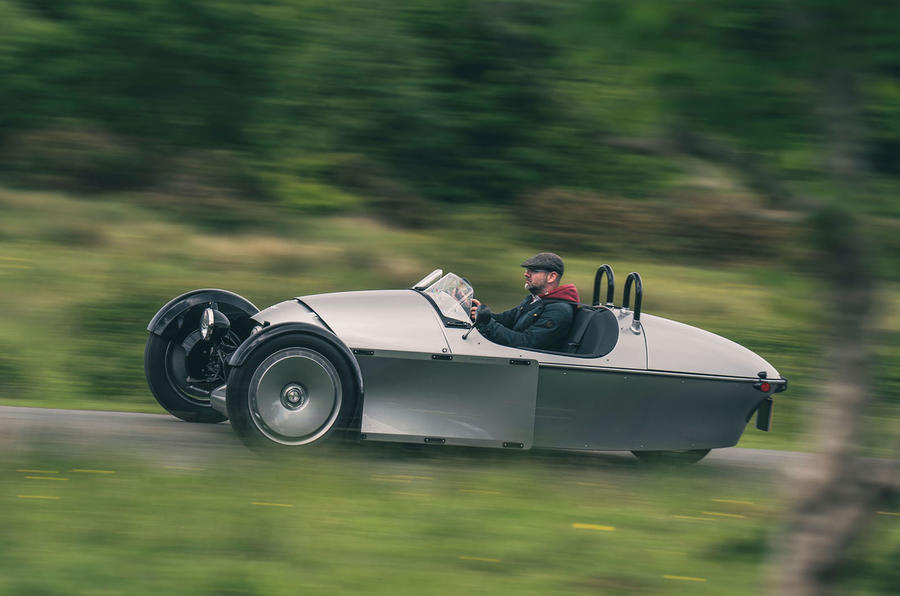



















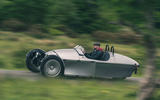




















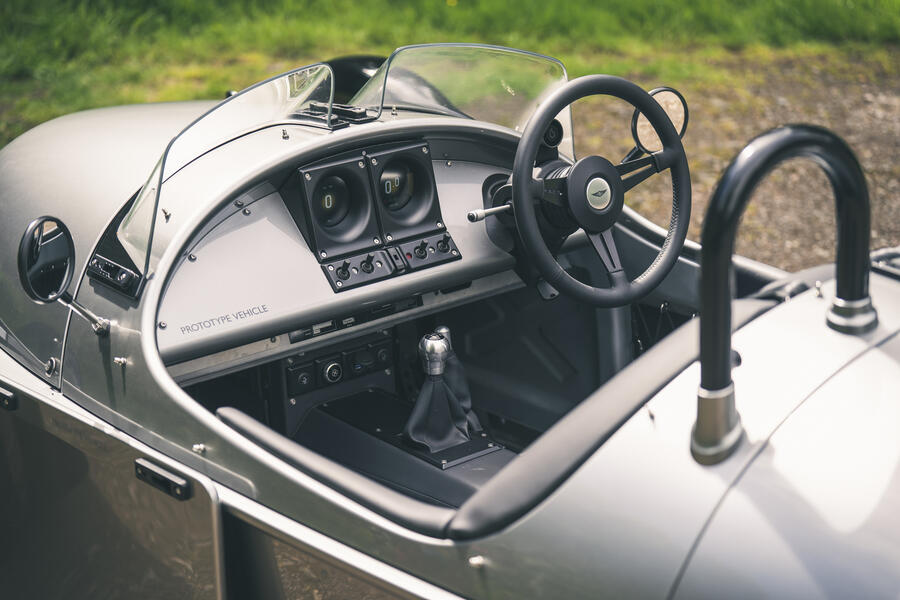
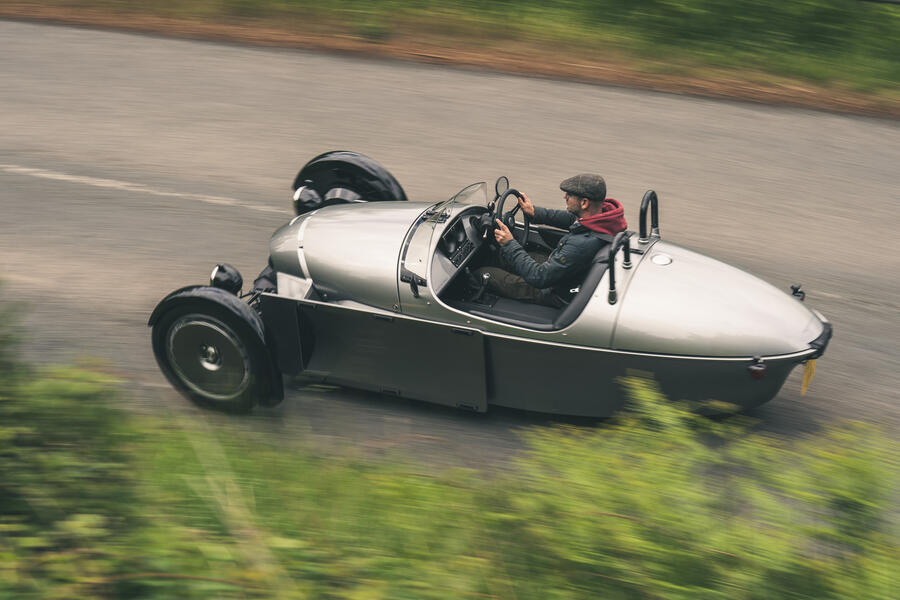
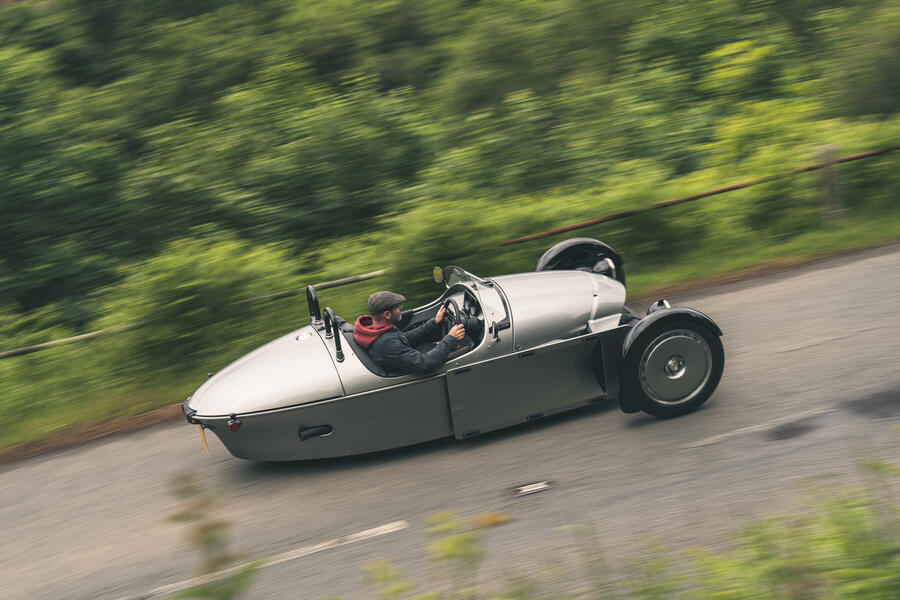
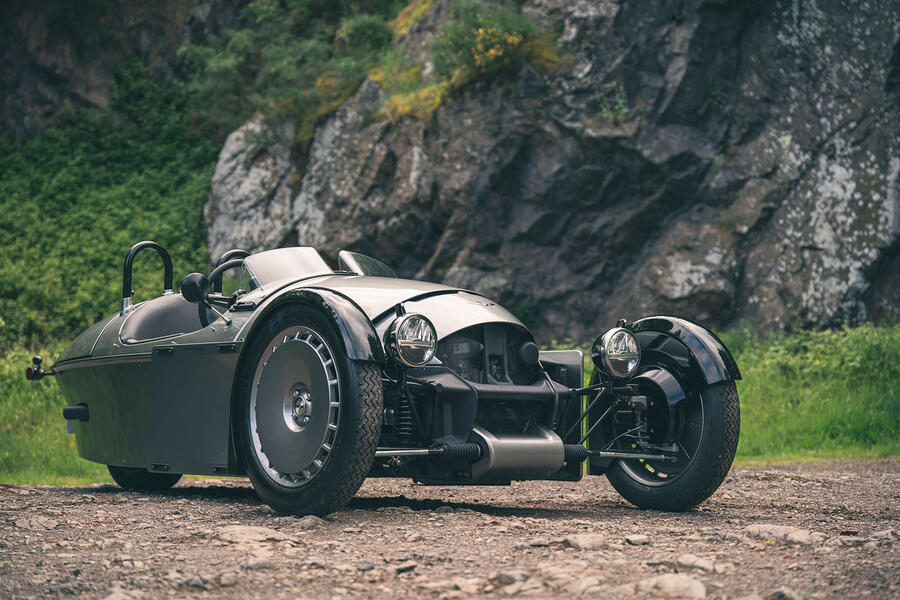




Add your comment